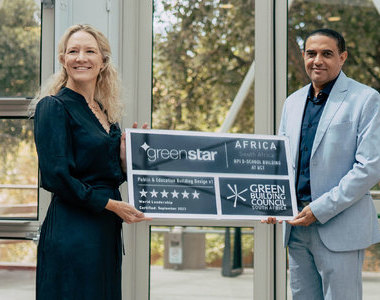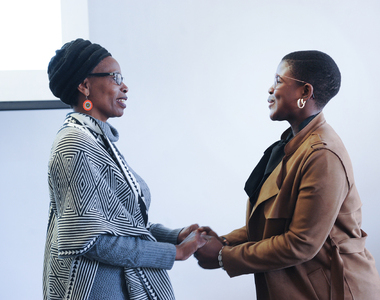Law researchers develop Constitutional Court monitoring platform
03 May 2024 | Story Niémah Davids Photo iStock. Voice Cwenga Koyana. Read time 4 min.
A unique platform, designed by two University of Cape Town (UCT) researchers – Nurina Ally and Dr Leo Boonzaier – and a data scientist, Neil du Toit, is the answer law scholars, journalists and the general public have been looking for. It provides valuable insight into the work of the Constitutional Court, including its functionality and jurisprudence and offers users an opportunity to access and view statistics directly related to South Africa’s highest court.
The platform is intended to spark discussion and debate on Constitutional Court trends and showcase research tools that law scholars, the media and the public are guaranteed to find useful. The initiative is coordinated by Ally and Dr Boonzaier from UCT’s Faculty of Law, in partnership with the Centre for Law and Society and the iNtaka Centre for Law and Technology both at UCT. Launched in April 2024 as a pilot project, the ConCourt Stats platform currently presents data for the period 2010–2019, but according to Ally will soon be updated to include more recent statistics.
“With this platform we hope to provide users with the kind of Constitutional Court data that will be useful and to encourage new avenues for research.”
“We are excited that ConCourt Stats is now up and running. With this platform we hope to provide users with the kind of Constitutional Court data that will be useful and to encourage new avenues for research,” Ally said.
UCT News caught up with Ally, who took us through the nuts and bolts of the platform, its objectives and how it aims to benefit the user.
Niémah Davids (ND): What inspired your idea to create a platform of this kind?
Nurina Ally (NA): In 2020, Leo and I began collaborating on an edited collection of essays in honour of Justice Edwin Cameron (retired Constitutional Court judge). As part of that project, we developed a database of his judgements during his tenure at the court, and simultaneously started a research project on the efficiency of the court. While working on these projects, we realised there is a need for a platform where court watchers and the public can access statistics and other information related to the court’s work.
We then started engaging the Centre for Law and Society and the iNtaka Centre for Law and Technology on the possibility of developing an interactive online platform to access Constitutional Court statistics. We were connected with Neil du Toit, a data scientist, and together we began designing the platform.
ND: What are its main objectives?
NA: We hope that the platform will be used to generate discussion and debate on Constitutional Court trends and to encourage a more empirical research approach on courts and case law. Depending on available funding, we hope to continue updating the platform so that users have access to current statistics. In time, we’d also like to expand the graphs on the site for users to track more aspects of the court’s work.
ND: Would you say this platform is plugging a much-needed gap in the legal fraternity?
NA: Yes, definitely! Currently, no publicly accessible platform that provides data on the Constitutional Court’s statistics and trends exists. There was a brief attempt by an independently run blog at such an initiative in 2013 and 2014, but it was discontinued shortly after it began.
ND: What makes this platform unique?
“ConCourt Stats is interactive and dynamic and allows users to select the judges, topics or rights that are of interest to them.”
NA: ConCourt Stats is interactive and dynamic and allows users to select the judges, topics or rights that are of interest to them. It is also the only free platform of its kind in the country, which is great, especially for resources like this.
ND: What’s the one thing you’d like users to know about the platform?
NA: This is a work in progress aimed at showcasing new research tools. We encourage researchers who are interested in this type of project to reach out to us for more information on the tool and how it can be used to maximise research processes.
 This work is licensed under a Creative Commons Attribution-NoDerivatives 4.0 International License.
This work is licensed under a Creative Commons Attribution-NoDerivatives 4.0 International License.
Please view the republishing articles page for more information.
Listen to the news
The stories in this selection include an audio recording for your listening convenience.























































































































































































































































































































































































